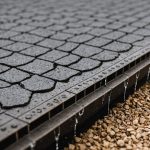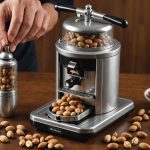From the steamy kitchens of sushi chefs to home-cooked meals around the globe, rice is a staple food for millions of people. This humble grain, when cooked correctly, transforms into a fluffy, sumptuous dish that can be enjoyed alone or as an accompaniment to a variety of dishes. However, cooking rice to perfection, particularly sticky rice, is a skill that has eluded many home cooks.
Thankfully, with the right rice cooker, you can ensure that your grains are cooked to perfection each time. This piece will delve into the key attributes that make a rice cooker ideal for preparing sticky rice. We will look at the factors that influence the texture and aroma of the rice, as well as the scientific aspects such as gelatinization and the role of amylose in rice.
Also to read : How Can You Select a Steam Oven That Also Works Well for Baking Bread?
Understanding the Science of Rice Cooking
Rice cooking is not just a simple process of heating grains in water. There is a science to it, and understanding this can help consumers choose the right cooker for their needs. When rice is cooked, the heat causes a process known as gelatinization. This is where the starch in the rice grain absorbs water and swells, leading to the softening of the grain.
According to scholars, the type of starch in rice, namely amylose, plays a significant role in determining the final texture of the rice. Varieties of rice with higher amylose content tend to be firmer and less sticky after cooking, while those with lower amylose content become sticky, a desirable attribute for sushi and certain Asian dishes.
Also to see : What Are the Most Crucial Specifications in a Vegetable Spiralizer for Raw Food Diets?
Importance of Water to Rice Ratio and Heat Control
In the quest to achieve perfectly cooked rice, the amount of water used and the control of heat are critical factors. The water to rice ratio is particularly important when it comes to cooking sticky rice. Often, the golden rule is to use equal parts of rice and water for most rice types. However, sticky rice requires less water due to its lower amylose content.
Heat control is another attribute that shouldn’t be overlooked. Cookers with adjustable heat settings are preferable as they allow the consumer to control the cooking process. This is important since the rate of gelatinization is highly dependent on the temperature. Too high a heat will cause the rice grains to burst, resulting in a mushy texture.
Aroma and Flavor Preservation
Rice is not just about texture. Aroma and flavor are equally important factors that consumers consider when cooking this staple food. Some rice cookers come with special features that help to preserve the aroma and flavor of the rice. For instance, a sealed lid helps to trap the steam, which has a significant impact on the aroma of the cooked rice.
Google research has shown that consumers often perceive the flavor of food through its aroma. As such, a rice cooker that preserves the aroma of the rice will, by extension, enhance its flavor. Additionally, some rice cookers come with a ‘keep warm’ feature that ensures your rice retains its heat and flavor for a longer period.
The Relevance of a Non-Stick Interior
The interior of the rice cooker is another crucial attribute that consumers often overlook. Cooked rice is known to be significantly sticky, particularly the low-amylose varieties. As such, a good rice cooker should have a non-stick interior.
This attribute is not only important for the ease of cleaning but also for the quality of the cooked rice. A non-stick surface ensures that all the grains of rice are cooked evenly. This avoids the formation of crusts at the bottom of the cooker, which often lead to a variation in the texture of the rice.
The Role of the Rice Cooker’s Size and Material
Finally, the size and material of the rice cooker play a significant role in its performance. Sticky rice tends to expand significantly during cooking. As such, a good rice cooker should be large enough to accommodate the expanded grains without spilling over.
The material of the cooker is also important. Cookers made from materials with good heat conductivity, such as aluminum, are preferable. These ensure an even distribution of heat, which is crucial for the uniform cooking of the rice.
In conclusion, achieving perfectly cooked sticky rice calls for more than just following a recipe. It requires understanding the science of rice cooking and choosing the right rice cooker. With the insights provided in this piece, consumers can make an informed choice the next time they’re shopping for a rice cooker.
The Impact of Rice Characteristics on Sticky Rice Preparation
When preparing sticky rice, it’s essential to understand that not all rice varieties are created equal. Certain types of rice are better suited for making sticky rice. Glutinous rice, often referred to as sushi rice, is the preferred variety due to its high starch content and low amylose content which gives it the characteristic stickiness desired in dishes like sushi.
In contrast, long-grain rice such as basmati or jasmine has a higher amylose content, which results in a fluffier, less sticky texture after cooking. Brown rice, which retains the bran layer that is usually removed in white rice, contains more nutrients but also has a higher amylose content, making it less suitable for sticky rice dishes.
An important factor to remember when using a rice cooker to prepare sticky rice is the need for soaking. Glutinous rice benefits from being soaked for several hours, or even overnight, before cooking. This process helps to soften the grains, allowing for better absorption of water during cooking and resulting in a stickier final product.
The same principle applies when cooking rice in a separate window, such as a steamer basket or pot. The use of a soak and steam method can significantly improve the texture of the cooked rice.
How Different Cooking Methods Affect Sticky Rice
The method of cooking rice can dramatically impact the end product. Traditional rice cooking methods can vary widely from region to region. In some Asian countries, for instance, sticky rice is traditionally cooked in a bamboo steamer. This method allows for even steam distribution, ensuring the rice grains swell uniformly and maintain a consistent texture throughout the cooking process.
However, in today’s modern kitchens, most people rely on electric rice cookers. These appliances offer a degree of convenience and consistency that can be difficult to achieve with traditional cooking methods.
The use of a rice cooker for preparing sticky rice offers several advantages. For starters, most rice cookers are equipped with a one-button operation, making them extremely user-friendly. Some advanced models even feature settings specifically for cooking different types of rice, including sushi rice or glutinous rice.
Additionally, rice cookers often come with a ‘keep warm’ function. This feature keeps the cooked rice at an optimal temperature without overcooking it, ensuring it remains warm and ready to serve for hours. This is particularly beneficial when preparing dishes that require the rice to be served warm, such as sushi.
In conclusion, a myriad of factors can influence the outcome of sticky rice preparations. These include the type of rice used, the cooking method, and the features of the rice cooker. By understanding these factors and how they interact, home cooks can take the guesswork out of preparing perfect sticky rice every time. Whether you’re a sushi enthusiast or just love the comforting texture of sticky rice, choosing the right tools and techniques can elevate your rice dishes to new culinary heights.











